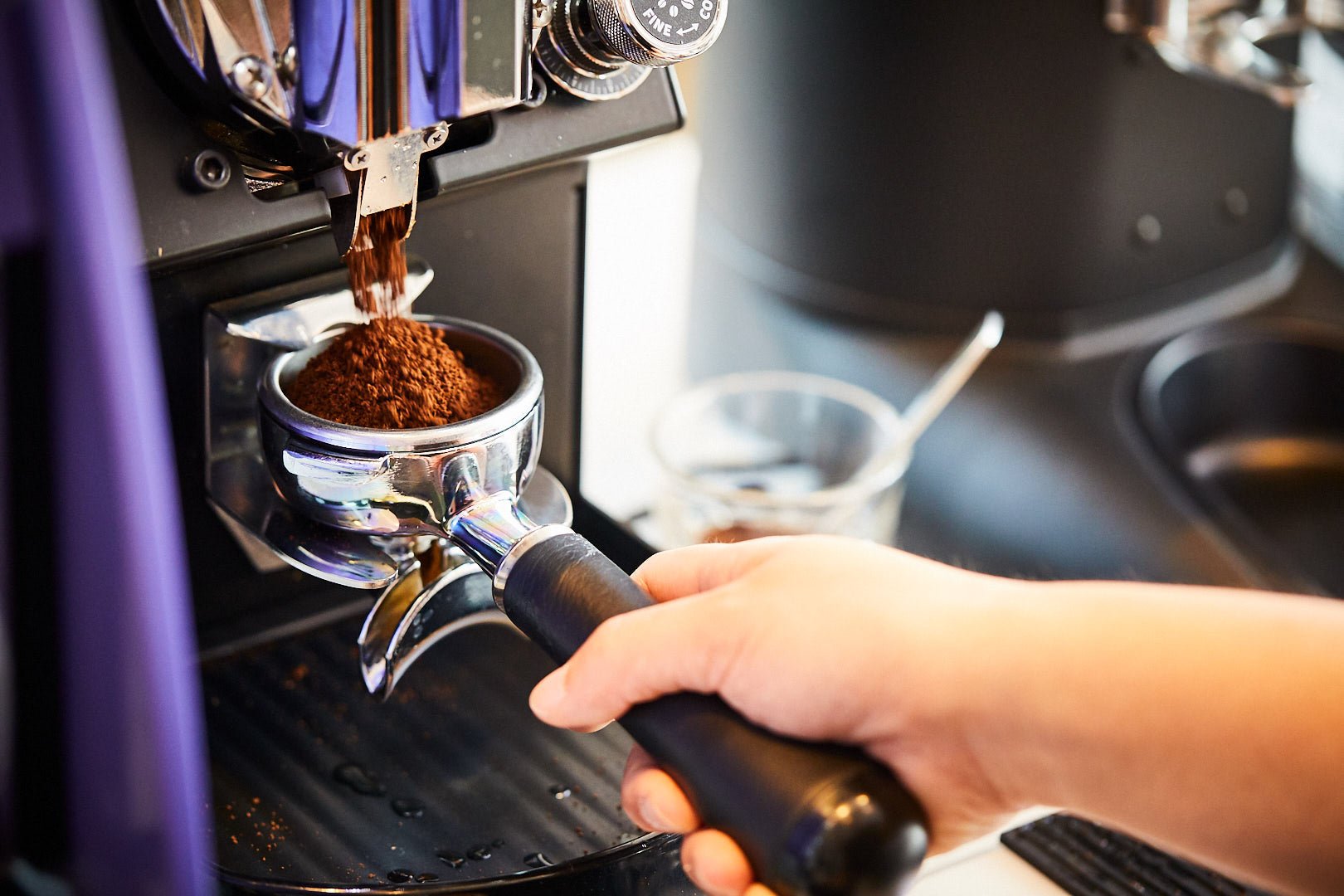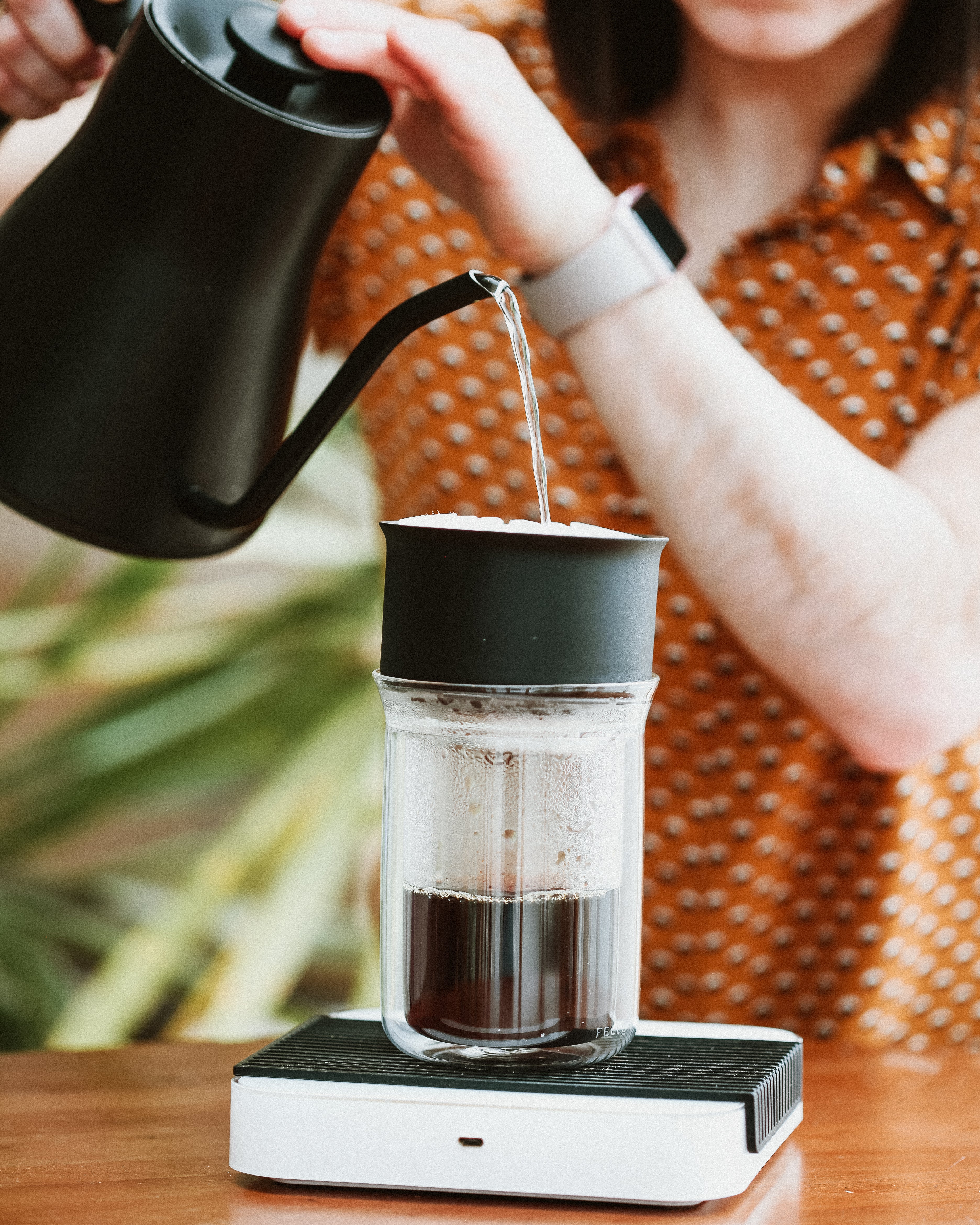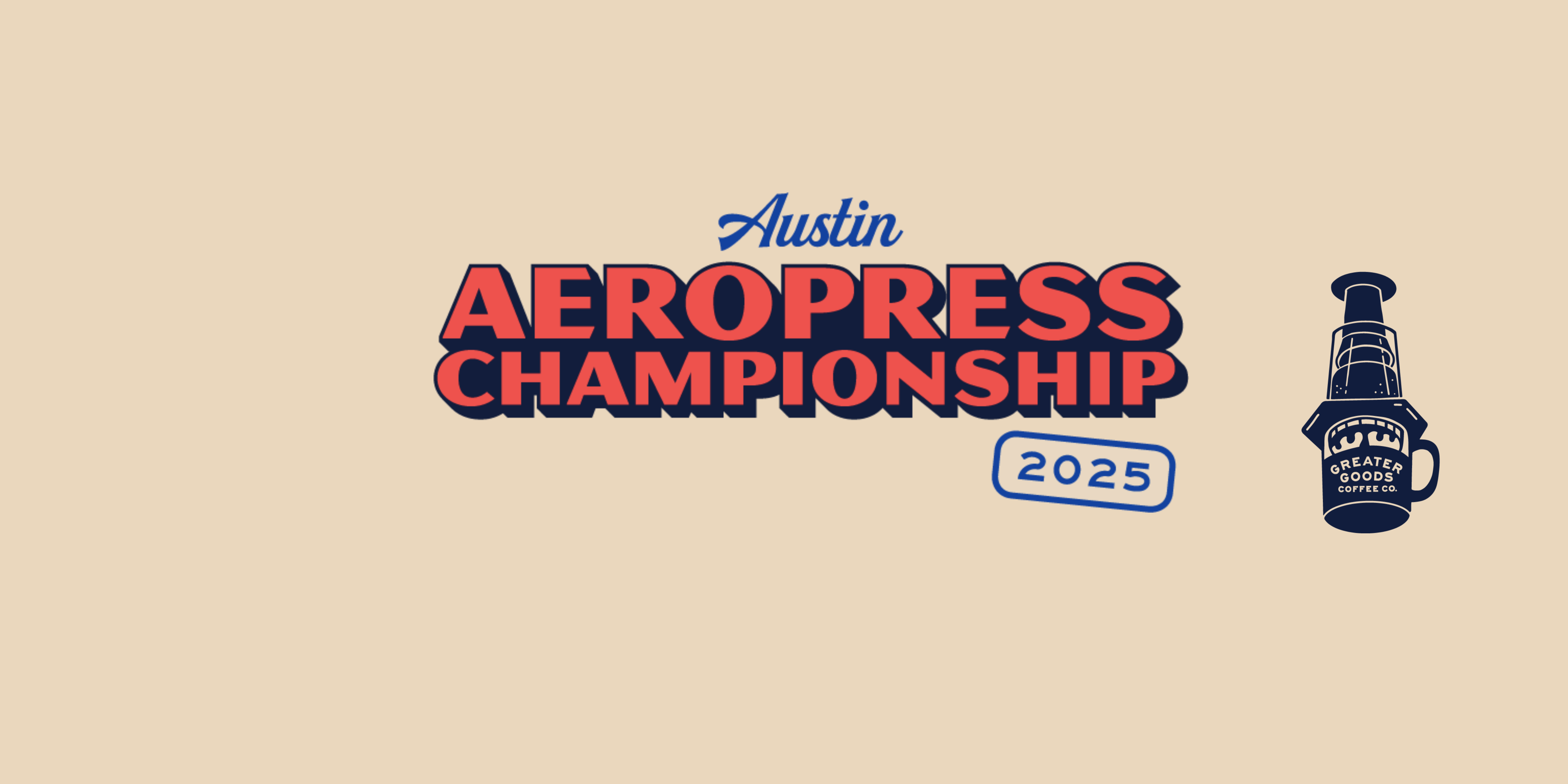Hello friends! We invite you to channel your inner Bill Nye and try this fun science experiment at home: Brew the same coffee with the same recipe on two different brewing apparatuses and taste the difference. Welcome to Profile Brewing 101 🤓
Profile brewing is the process of manipulating your brew method to tailor to a specific coffee.
Coffee is an incredibly complex little bean. Everytime we enjoy a sip, we’re enjoying layers upon layers of scientific variables. There’s science at origin, lots of it in roasting, brewing science, and even sensory science.
There’s so much information out there, and the stuff that trickles down to the rest of us can be overwhelming, misleading, and confusing. Never fear! Your friendly neighborhood coffee nerds (Team GG) are here to simplify without sacrifice. As Albert Einstein famously said, “everything must be made as simple as possible. But not simpler.”
What is extraction?
A good place to start is with definitions. When we brew coffee, we’re looking for an optimal and uniform extraction. Extraction is the amount of dissolved solubles in coffee, like caffeine, sugars, and acids. You can measure your total dissolved solids (TDS) with a refractometer. If that sounds like it came straight out of a 1980s sci-fi movie, then welcome to the land of coffee nerdom. We are so happy to have you. This is the Specialty Coffee Association's coffee brewing chart (below). Each factor we're going to discuss plays a crucial role in the overall balance of your cup of coffee.
The Importance of Water
Up to 60% of the human body is water. 71% of the earth is water. A great cup of coffee is about 98% water, so before you go rushing for the tap handle at 5 a.m., maybe slow your roll for a hot sec. The Specialty Coffee Association has standards for water quality, and there have been a handful of studies over the last few years about bottled water that can get the job done. Third Wave packets are another great option for a high-quality H2O. Moral of the story: all great coffee begins with great water!
Choosing the Brew Method

What exactly do you want to taste? Do you like a heavier, deeper coffee? Perhaps you should dust off the French press. Looking to accentuate a pretty little jasmine note in that washed Ethiopian coffee? We might suggest the V60 :-). Because you're reading this article, I'm sure you know there are a TON of options for brewing coffee. French press, Aeropress, flat-bottom, cone-shaped, espresso...
The fact is, no brewer is “better” than another. They all serve unique purposes, but to get the most out of a specific coffee, it’s good to be a little choosy.
Typically, more developed roasts (dark) lend themselves to immersion brew methods, such as French press and cold brew. When less dense, more porous coffees are fully submerged in water, solubles are easily extracted, resulting in a full-bodied, heavy mouthfeel. It’s also virtually impossible to over-extract coffees with this method.
Less developed roasts, or lighter roasts, typically do better in drip-style brewing, where there is a constant stream of fresh water running through the grinds. This includes the V60, Kalita Wave, Stagg, and batch brewers, among others. This is not an end-all, be-all decision. It is ultimately up to personal preference.
The material of the brewer (metal, ceramic, plastic), the angle, and the filter material are also variables to consider when making your decision. There's an age-old debate between flat-bottom and cone enthusiasts. I’ll just leave you with a hyperlink if you’re curious about that.
Brewing Temperature
Another factor worth manipulating is the temperature at which you’re brewing. This mostly depends on the density of your coffee beans.
Density, however, is not the easiest thing to measure if all you’ve got at home is a kitchen scale. 2013 Barista Champion Pete Licata tests density with a graduated cylinder. Here is the entrance to yet another rabbit hole. Explore as you wish.
For now, we’ll gently suggest this: coffees grown at high altitudes tend to be denser. Roasters typically prefer high-altitude coffees as light roasts, to bring out the delicate floral and fruit notes. This is not always the case, but it’s a great place to start.
The SCA recommends a brewing temperature between 195 and 205 degrees fahrenheit. Dark roast coffees, like our Rise and Shine, will taste sweeter at lower water temps. Light roasts, like Regalo, shine around 204-205. This is because many of the available solubles in a dark coffee are lost during the roasting process. If you want to get the most out of a denser, lighter bean, you’ll need hotter water. Make sense? I can hear you nodding your head. Awesome. Let’s keep going.
Grind Size
One of the first things we manipulate when dialing in a new batch brew at our cafes is grind size. I, and many other brewers it seems, like to think of two piles - one of little pebbles and the other of sand. When I pour water over my piles, the water will move faster through the pebbles than the sand. Coarser grinds (pebbles) allow for a faster flow, and therefore less extraction. Finer grinds (sand) slow down water flow, allowing for more extraction.
Certain brew methods call for particular grind sizes - coarse for French Press, fine for espresso, etc. - but slight adjustments can make the difference between sour and sweet. If your coffee is tasting super acidic, perhaps try a finer grind. If it's bitter, coarsen it.
Uniform grind size is also important, but it's hard to agree on a universal language. What's sea salt to one person might look like sand to another. That's why we're always on about investing in a good burr grinder. It's the easiest way to follow the recipes and ensure consistency - we promise!

it's all salt to me
Ratio of Coffee-to-Water
This may seem obvious, but your actual recipe will certainly affect your final product.
As a general rule, we like to begin with a 1:16 ratio and adjust slightly for desired strength, mouthfeel, and body. It should be said different brew methods call for different ratios. For example, we begin with a 1:2 ratio when dialing in our espresso. That would be absurdly strong on a V60 - take our word for it.
Like literally everything else we've said so far, this comes down to preference. Dust of your lab coat and trust your palette! There's no such thing as a universal, perfect cup of coffee - but hey, it's pretty fun to try.
Other Factors to Consider
Brew Time: The amount of time water is touching the coffee is key to producing optimal extraction. This should directly correlate with your grind size - too long, or too fine, will result in over-extraction, while too short, or too coarse, in under-extraction. Some coffees can taste very sweet outside of the optimal range for their brewing method, so trial and error is key.
Agitation/Turbulence: Some coffee professionals believe turbulence, or the speed and vigorousity at which you pour your water, can have an affect on the flavor of the final cup.
Here’s the basic gist:
Begin with identifying the mouthfeel, body, and flavor notes you want or expect to taste. Make educated decisions about your method, water temperature, grind size, filter, and turbulence accordingly. Shoot for sweetness and try, try, and try again. Happy brewing!
Interested in the nitty gritty? Very cool. Shoot us an email at hello@ggroasting.com for our modified SCA Brewing classes in the age of COVID.




